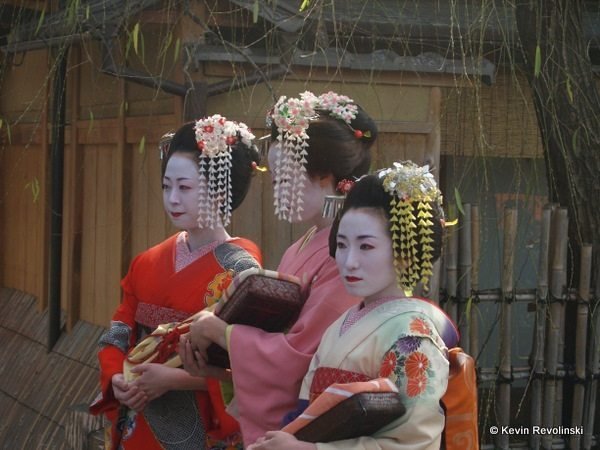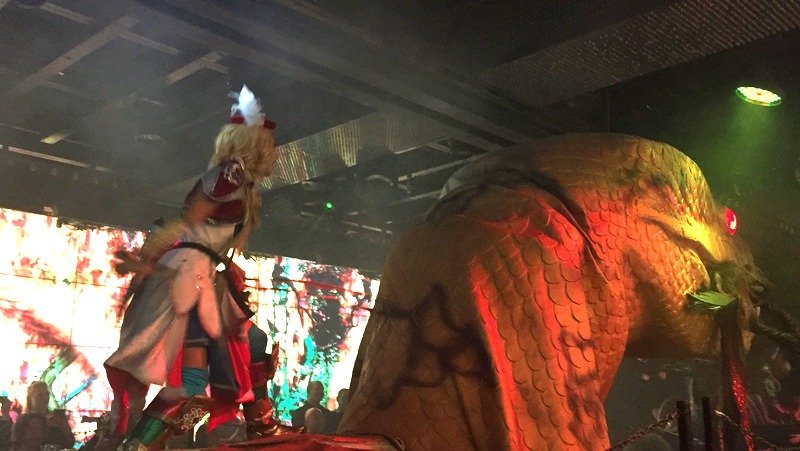Japan’s Iconic Clothing: The Kimono
 The translation of the word kimono is simply “clothing.” If there is any quintessentially Japanese apparel, this would be it. The Geisha and the Japanese woodblock prints popular in the 19th century transformed the garment into an emblem of Japanese culture and its sense of beauty. But while the kimono appears simple in its design, its history and evolution are long, its functions are many, and just its method of use is quite complicated. And its origins aren’t even Japanese.
The translation of the word kimono is simply “clothing.” If there is any quintessentially Japanese apparel, this would be it. The Geisha and the Japanese woodblock prints popular in the 19th century transformed the garment into an emblem of Japanese culture and its sense of beauty. But while the kimono appears simple in its design, its history and evolution are long, its functions are many, and just its method of use is quite complicated. And its origins aren’t even Japanese.
Japanese foreign diplomats who traveled to China in around the 5th century encountered clothing that incorporated an overlapping collar. This fashion soon crossed to the island and by the 8th century the style had taken hold. Unlike today’s kimono, a skirt was worn over the top of this one. But in the 15th and 16th centuries, the kimono made its move from undergarment to outerwear. By the Edo Period, from 1600 to 1868, it had become a long, flowing garment. It was during this time that the use of the obi sash became so important. Today’s practice of reining in the flowing silk and tucking the length of the kimono under the obi to keep it off the floor, began in the late 19th century. While men also wear kimonos, they are much simpler in style and conservative in color, and unlike the long flowing material of the woman’s kimono, they fit the man exactly, without being tucked in under the sash.
To make a kimono, it takes exactly one bolt of material cut into four primary pieces: two for the body and two for the sleeves, with smaller pieces reserved for the collar and front panel. The patterns of a formal kimono are free-form, and in some cases, an elaborate tie-dye known as shibori. The informal varieties, on the other hand, might be mass produced and use a repeated pattern across the fabric. But even these will require a lot of hand stitching for completion.
Nice kimonos don’t come cheap. Prices for high-quality silk can go up over $10,000 USD – and that’s not counting all the accessories that a formal kimono requires. These items could actually double the price. Needless to say, great care is taken to preserve the kimono so that it may be worn repeatedly for years.
But the frequency of use has declined much over the years. Geishas still remain a part of modern Japanese culture and visitors can see them from time to time, especially in places such as Kyoto. (In fact some tourists spend a day getting geisha makeovers and walking around a place like Kyoto dressed in a kimono!) Traditional rituals, such as tea ceremonies or ikebana, a meticulous flower-arranging practice, will also require the donning of a kimono. But beyond that, the kimono has a limited presence. Older women may still put them on and a younger woman might wear one for her wedding.
Different occasions call for different kimonos. A furisode kimono is reserved for a woman’s coming of age (to vote, smoke, drink and be eligible for marriage), while the houmongi is what she will wear once she is married. These are worn to ceremonies, especially weddings. But if the wedding happens to be that of a close relative, the tomesode kimono must be worn. This shows a black background, to contrast the white of the bride’s elegant and long draping uchikake kimono, and colorful trimmings to convey happiness. Finally, the all-black mofuku is worn for funerals.
Didn’t Your Mother Teach You How to Dress?
It may sound strange, but a lot of young Japanese need to attend a school to learn how to put on a kimono. Just the sash or obi alone is so complicated to tie, that many modern women don’t know how to do it. If their mothers or grandmothers have forgotten or haven’t imparted that knowledge, then it’s off to class.
There’s an order to things. The process begins with the white socks or tabi, moves on to underwear, the hadajuban, which with padding covers up the body’s curves. The next step is the nagajuban. This garment, typically white, gives shape to the kimono which will go over the top of it. The fabric is therefore thinner, and the length is shorter so that the garment does not appear from under the kimono. The exception is the white collar which rises up out of the outer kimono. The nagajuban is tied in place with a cord called a koshi-himo and that too is covered by an inner sash of thin material known as a date-obi. All of this interior clothing is to protect the kimono itself. The nagajuban keeps the fine silk of the outer garment from wear and sweat while the date-obi keeps wrinkles out of the outer obi.
The final step of the process is putting on the kimono itself. The left side lays over the right and the whole thing is tied into place with the obi and its decorative knot or musubi. It is curious to note that the laying of the collar is important; right lays over left only when one is dressing a dead body for a funeral! Finally, if the kimono is to be worn outside, a pair of zori sandals is used. Slip-on footwear is necessary as anyone in a kimono would have difficulty crouching or bending down to work with buckles, laces or a shoe horn.
The formal kimono is all about the presentation. The collar of the nagajuban rises just about an inch out of the kimono and fits loosely about the woman’s neck. Beauty is in the eye of the beholder and the beholders in Japan find a woman’s neck the height of sensuality. The special collar draws attention to this.
But not all kimonos are so serious. In summer, the kimono of choice is the yukata. This is a lighter piece of clothing, commonly made of cotton not silk like the formal kimono. It too is wrapped left over right, but its simplicity and the absence of a nagajuban means it is easier to learn how to put on. The name literally means “bath clothes”, and though it is not limited to that purpose, it is commonly still worn in baths and hot springs. It can also be seen on women attending summertime festivals.
And given its price tag compared to the silk variety, one suspects that the yukata may also be the popular choice as the souvenir kimono to be found on tourists.









 ORDER YOUR COPY TODAY!
ORDER YOUR COPY TODAY! ORDER YOUR COPY TODAY!
ORDER YOUR COPY TODAY!
Had no idea of the variety or protocol for Kimonos before reading this. Thanks for the lesson – great shots btw.
Thanks! Yeah, I just figured, see one kimono, see them all. I should have known better. The Japanese LOVE ceremony and details. In an upcoming blog post I visit a place that makes hand-poured coffee in Tokyo. Took 10 minutes to make a little cup of espresso. Wow.
Japan is one of my dream destinations and I would love to see a Geisha girl 😀
It’s pretty cool. And I had figured seeing a Geisha would be a rather rare occurrence, but if you look in the right neighborhoods you can often see them going to work. I saw a lot of them in Kyoto.
Really interesting, they’re so beautiful. Too bad it’s not very common anymore. I would like to see a tourist walking around dressed in a Kimono, would be funny! 😉
Yeah, sometimes this whole Westernization/European thing is pretty boring. You’ll still see them from time to time, either geishas or someone on their way to a traditional wedding or the like. But yeah, not really common unfortunately.